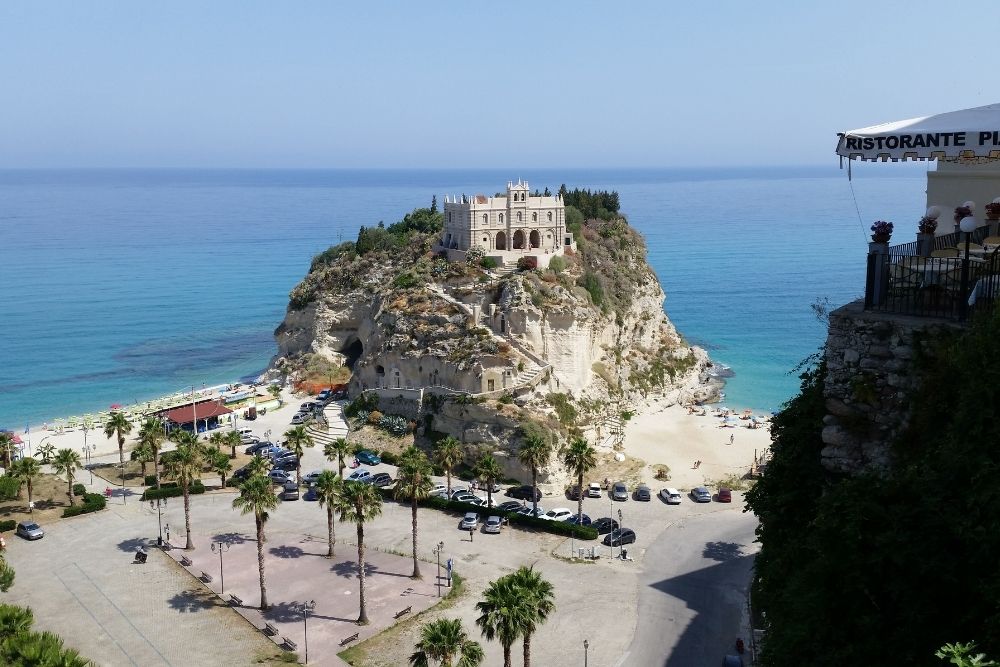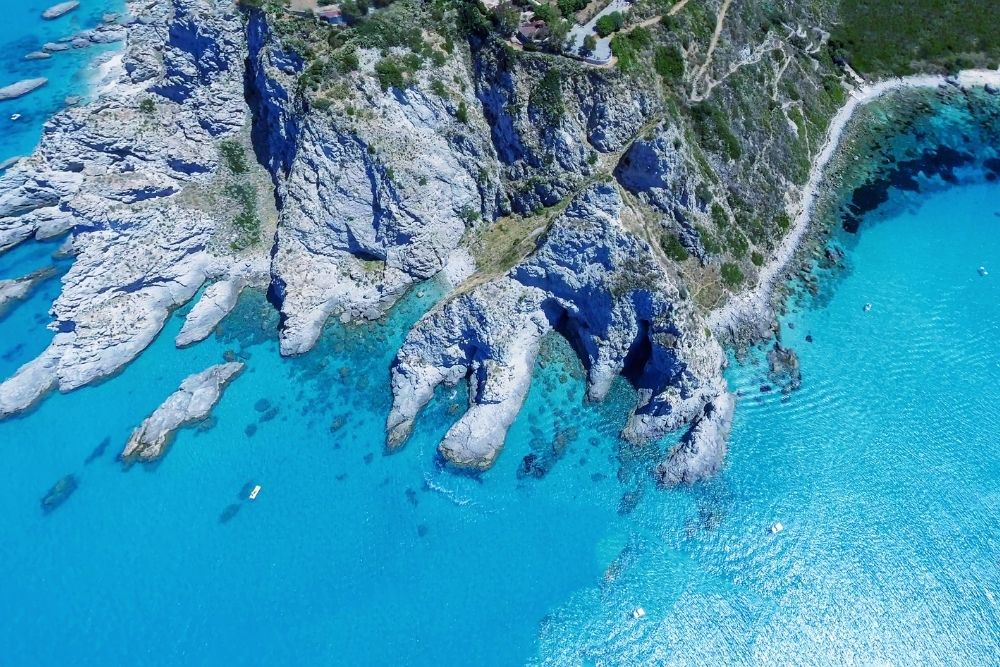
Province of Cosenza
The province of Cosenza borders the Tyrrhenian to the west, the Ionian Sea to the east, the provinces of Catanzaro and Crotone to the south and the region of Basilicata to the North.

Province of Cosenza, Calabria
It has some beautiful beaches along both of its coastlines with clear blue water and a backdrop of the mountainous interior. With the two very different coastline and parts of the Sila National Park and the Pollino National Park stretching into it the region is geographically diverse. This makes it a fascinating area to visit and provides endless outdoor activities from deep sea diving and sunbathing to skiing, trekking and white water rafting.
The provincial capital of the region is the town of Cosenza which is dominated by a Norman Hohenstaufen castle which is perched on a high hill above the town. The centre of old town is one of the oldest in Italy with many beautiful old buildings and steep, narrow streets. The new part of the town is now an agricultural and commercial centre of great importance to the region of Calabria.
There are many old, historic villages to explore in the beautiful countryside. There is the university town of Rende, Coriglian Calabro with its ancient ruins and the village of Rocca Imperiale clinging to a hillside near the border of the region of Basilicata.
Located in the northern part of the Calabria region in Southern Italy, 'Cosenza Province' is a land of extraordinary beauty and rich historical significance. Known for its rolling hills, lush mountains, pristine coastline, and vibrant culture, the province is a hidden treasure, offering a mix of ancient heritage, charming towns, and natural wonders. From the medieval streets of Cosenza city to the majestic landscapes of the Pollino National Park, the province captivates travelers with its timeless appeal.
Historical Overview of Cosenza Province
Cosenza Province, with its long and varied history, has been shaped by numerous civilizations. Originally inhabited by the 'Oenotrians', an ancient Italic tribe, the area later became part of 'Magna Graecia', a period during which Greek colonists founded cities along the Ionian coast.
The city of 'Cosenza', the provincial capital, gained importance under the 'Bruttians', an ancient Italic people who made it their capital. When the 'Romans' conquered Calabria in the 3rd century BCE, Cosenza flourished as a Roman colony. The region later fell under Byzantine control before becoming part of the 'Norman Kingdom of Sicily' in the 11th century, when it experienced significant growth in culture, religion, and trade.
During the Middle Ages, Cosenza earned the nickname '“Athens of Calabria”' due to its reputation as a center of learning and culture. Scholars and poets frequented the city, making it a hub of intellectual activity. Today, traces of its rich history remain visible in its architecture, art, and cultural practices.
Must-See Attractions in Cosenza Province
Cosenza City
The capital city, Cosenza, is a must-visit destination for history buffs and art enthusiasts. The city’s 'historic center' is one of the oldest and most well-preserved in Calabria, with a labyrinth of narrow streets and medieval buildings. 'Piazza XV Marzo' is the heart of the old town, home to the 'Teatro Rendano' and the 'Monument to Bernardino Telesio', one of Italy's most famous philosophers.
'The Cathedral of Cosenza', a UNESCO World Heritage site, dates back to the 11th century. This Romanesque structure has been a witness to centuries of history, from the Norman conquest to modern times. Equally significant is the 'Swabian Castle', perched on a hill overlooking the city. Built in the 12th century by Emperor Frederick II, the castle offers panoramic views of the city and surrounding mountains.
Pollino National Park
'Pollino National Park', one of the largest national parks in Italy, spans the border between Calabria and Basilicata, covering a significant portion of Cosenza Province. This vast park is a haven for nature lovers, offering towering mountains, deep gorges, and rivers ideal for outdoor activities like hiking, rafting, and climbing.
The park is famous for its unique biodiversity, including rare plant species like the 'Bosnian pine' (Pinus heldreichii), which grows on the park’s highest peaks. Pollino is also home to a variety of wildlife, including wolves, golden eagles, and roe deer. The area’s landscape changes dramatically with the seasons, offering snow-covered peaks in winter and blooming wildflowers in spring and summer.
Sila National Park
Another natural gem within Cosenza Province is 'Sila National Park', located in the mountainous Sila plateau. Known for its dense forests, picturesque lakes, and cool climate, Sila National Park is ideal for those seeking peace and tranquility. 'Lake Cecita' and 'Lake Arvo' are popular spots for fishing and boating, while the surrounding woods are perfect for hiking and birdwatching.
The park is also known for its ancient forests, including the 'Giants of Sila', a group of centuries-old trees that reach impressive heights. In winter, Sila transforms into a winter sports destination, with opportunities for skiing and snowboarding.
Paola and the Sanctuary of Saint Francis of Paola
The coastal town of 'Paola' is famous for being the birthplace of 'Saint Francis of Paola', a revered figure in Catholicism. The 'Sanctuary of Saint Francis', located on a hillside overlooking the town, is a major pilgrimage site. Founded by the saint himself in the 15th century, the sanctuary is a peaceful retreat that draws visitors from across Italy.
In addition to its religious significance, Paola is a charming coastal town with beautiful beaches along the Tyrrhenian Sea, making it a perfect combination of spiritual and leisure tourism.
Altomonte
A charming medieval village located in the foothills of the Pollino Mountains, 'Altomonte' is renowned for its well-preserved architecture and cultural heritage. The town is home to the 'Church of Santa Maria della Consolazione', a Gothic masterpiece dating back to the 14th century. Its frescoes and stunning rose window make it a must-see for art lovers.
Altomonte is also known for its wine production, particularly 'Cirò wine', one of the most famous wines of Calabria. Visitors can tour local vineyards, sample wines, and enjoy the traditional cuisine of the region.
Cultural Heritage and Traditions of Cosenza
Cosenza Province boasts a rich and diverse cultural heritage, deeply influenced by its historical interactions with various civilizations. This is evident in its 'architecture, festivals, and traditions', many of which have been preserved through generations.
Historical and Religious Festivals
Throughout the year, Cosenza celebrates various festivals, many of which are rooted in religious tradition. One of the most important is the 'Feast of Saint Francis of Paola', held in early May, which includes a large procession, fireworks, and street fairs.
Another notable event is 'La Fiera di San Giuseppe (Saint Joseph’s Fair)', one of the oldest and largest markets in Southern Italy. Held annually in Cosenza city, this event dates back to the 13th century and offers an array of traditional products, from food to handcrafted goods.
Calabrian Folk Music and Dance
Music and dance play a vital role in the cultural fabric of Cosenza. The province is known for its traditional 'tarantella', a lively folk dance that is often performed during festivals and social gatherings. Accompanied by folk instruments like the 'tamburello' (tambourine) and 'zampogna' (bagpipe), the tarantella reflects the spirit of the Calabrian people, with its rhythmic beats and energetic movements.
Gastronomy of Cosenza
Calabrian cuisine is simple yet flavorful, drawing from the region’s fertile soil and coastal bounty. Cosenza Province is no exception, offering a variety of local dishes that highlight the region’s agricultural traditions.
Cured Meats and Cheeses
One of the hallmarks of Cosenza’s cuisine is its exceptional 'cured meats', particularly 'soppressata', a type of dry salami made from pork, and 'capocollo', a seasoned cured ham. These meats are often paired with local 'pecorino cheese', made from sheep’s milk, and enjoyed with homemade bread.
Pasta and Vegetables
Pasta plays a central role in Calabrian meals, with dishes like 'fileja' (a local handmade pasta) being a common staple. Vegetables, particularly 'eggplant' and 'peppers', are widely used in Cosenza’s cooking, often prepared as simple yet flavorful dishes such as 'parmigiana di melanzane' (eggplant parmesan) and 'peperonata' (stewed peppers).
Seafood Specialties
Thanks to its proximity to both the Ionian and Tyrrhenian seas, Cosenza offers a wide range of seafood dishes. 'Baccalà alla cosentina', a dish made with salted cod, is a local favorite, often served with tomatoes, olives, and capers.
Modern Cosenza: A Blend of Past and Present
While deeply connected to its past, Cosenza Province has embraced modernization, particularly in its urban centers like Cosenza city. The city’s 'Museo dei Brettii e degli Enotri' and 'Bilotti Open-Air Museum' are excellent places to explore the province's ancient history and contemporary art scene.
With increasing tourism, improved infrastructure, and ongoing cultural revitalization projects, Cosenza is balancing its ancient roots with modern developments. Its combination of history, culture, and natural beauty makes it an increasingly popular destination for travelers looking for an authentic Italian experience away from the more crowded tourist areas.
Conclusion
Cosenza Province is a hidden gem in Calabria, offering visitors an unparalleled journey through history, culture, and nature. From ancient ruins and medieval churches to unspoiled national parks and traditional festivals, Cosenza invites travelers to discover its rich heritage. Whether you're drawn by its charming hilltop towns, stunning landscapes, or delicious cuisine, Cosenza is sure to leave a lasting impression, making it a must-visit destination in Southern Italy.







